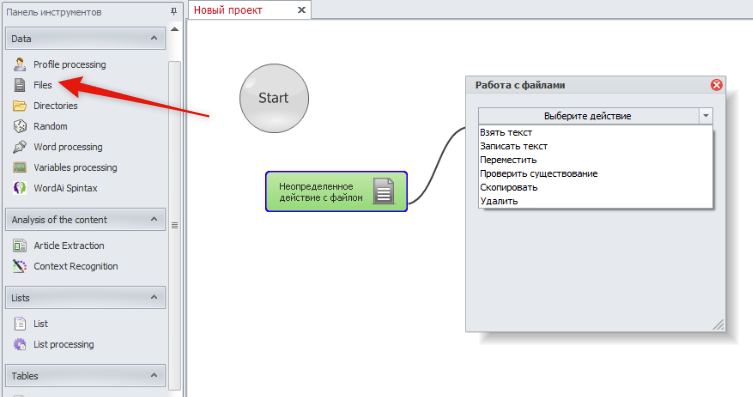There are several ways to get data for use in a project:
Lists are mainly used to get line-by-line data from a text document (for example, a list of e-mail, headings for articles, etc.).
Tables are used to obtain more complex data (for example, a list of products for an online store, where different data are presented line by line: name, price, description, etc.).
Files (see below) - when you want to immediately load the entire contents of the file into the project for further work with it.
Input settings - this method is used when you manually plan to change certain data, without editing the template or documents attached to it.
Working with files
With this action you can perform basic necessary operations with the file and its contents. All operations are intuitive in themselves, I would like to focus only on checking the existence of a file and writing to a file. If the file does not exist, the result of the action will be an error and the template will follow the red (unsuccessful) exit from the action. If you plan to use the template in multiple threads, do not write to the file with this action to avoid conflicts and data loss. For this purpose, use lists and the add line to list action.
